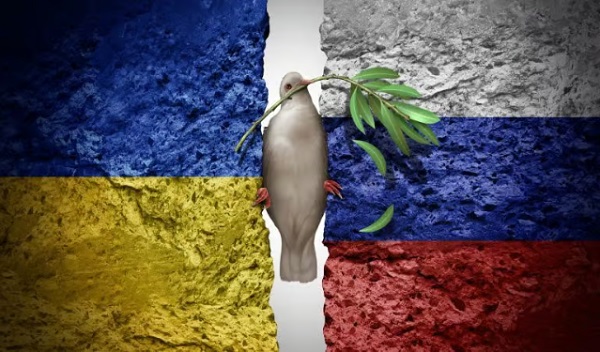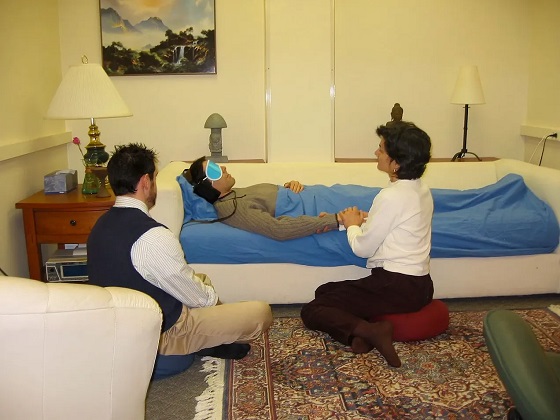Brownstone Institute
The Amateur Who Unraveled Wuhan

From the Brownstone Institute
BY
Tye’s unique perspective on China’s restrictive policies intensified his curiosity about the pandemic’s origins in early 2020. Amidst rampant speculation, his fluency in Chinese, and a decade of cultural immersion enabled him to explore overlooked open-source data, distinguishing him from those content with merely accepting information as presented.
Matthew Tye, an independent documentarian with a chronicled decade of living in (and motorcycling throughout) China, developed a profound understanding of its culture and language. In March 2020, Tye emerged as a singular figure in the scrutiny of the origins of the Covid-19 virus, using primary sources such as job postings and communications between Chinese researchers – putting to shame a New York Times reporter’s top-down approach of channeling Dr. Fauci (who himself may have been channeling CCP agitprop).
Yet despite Tye’s intricate and subtle discoveries linking the Wuhan Institute of Virology to the outbreak, his word didn’t travel much further than his own YouTube channel – along with one National Review article that similarly did not reverberate beyond its own innate viewership. This scenario underscores a poignant irony: in a digital age where (mis)information can circulate the globe instantaneously, platforms that could have amplified truth – Google, Facebook, Twitter – and the CDC – became custodians of silence, diverting public gaze from the “inconvenient truths” of China’s duplicity and the American deep state’s complicity – during the pandemic’s early days.
Before the pandemic reshaped global narratives, Tye was known for his engaging videos that captured the essence of living in China. He shared insights ranging from cultural explorations like Mahjong and the perceptions of tattoos in Chinese society, to more profound observations about the places where Chinese millionaires aspire to live in the US, and even a quest for China’s rumored “white people.” His documentaries and motorcycle journeys through China’s most remote and fascinating locales revealed China through an unfiltered lens.
Tye, deeply integrated into life in China through marriage and fatherhood, found himself compelled to leave the country in haste in 2018. This decision came after a chilling revelation: the public security bureau in Huizhou was circulating his photo, making him a target – due to his involvement in drone photography, albeit through Chinese contractors.
Relocating to California, Tye’s unique perspective on China’s restrictive policies intensified his curiosity about the pandemic’s origins in early 2020. Amidst rampant speculation, his fluency in Chinese, and a decade of cultural immersion enabled him to explore overlooked open-source data, distinguishing him from those content with merely accepting information as presented.
Tye’s scrutiny of China’s coronavirus response, detailed in his January 2020 critique “China Doesn’t Have This Under Control,” stemmed from skepticism of China’s motives and practices after long personal experience with both. Tye highlighted the country’s counterfeit N95 masks, censorship, hasty (and shoddy) construction of instant hospitals, hypocritical approach to travel restrictions; locking down its own cities while exporting the infected to Europe. Tye was unflinching in his analysis.
In a climate where the Chinese government was vigorously attempting to deflect inquiries into the virus’ origins, suggesting Italy, Russia, or elsewhere, Tye focused on the “metadata” resting only slightly below the surface, accessible to the curious, e.g. the enigmatic disappearance of 21 million cellphone subscriptions in China’s coinciding with the onset of strict lockdown measures; and discrepancies in Covid-19 statistics between China and open societies.
In late March 2020, he delved into the Wuhan Institute of Virology’s online presence, where he uncovered job postings and discussions from November 2019 that hinted at research on bat coronaviruses with potential human transmission. His most startling discovery in April 1, 2020’s “I Found The Source of the Coronavirus” involved a researcher who vanished from public view, with only opaque reassurances from the institute regarding her well-being. These findings were significant not just for their content but for the method of discovery; Tye relied on straightforward internet searches, bypassing the layers of censorship and obfuscation that can hinder such inquiries to China itself.
National Review’s Jim Geraghty did a thorough appraisal (April 3, 2020) of (the improbable) Matthew Tye’s groundbreaking findings:
“It is understandable that many would be wary of the notion that the origin of the coronavirus could be discovered by some documentary filmmaker who used to live in China [yet] a great deal of the information that he presents, obtained from public records posted on the Internet, checks out.”
“On December 24, 2019, the Wuhan Institute of Virology posted a second job posting, “long-term research on the pathogenic biology of bats carrying important viruses has confirmed the origin of bats of major new human and livestock infectious diseases such as SARS and SADS, and a large number of new bat and rodent new viruses have been discovered and identified.— which Tye contends meant, “we’ve discovered a new and terrible virus, and would like to recruit people to come deal with it.””
“He also contends that “news didn’t come out about coronavirus until ages after…doctors in Wuhan knew that they were dealing with a cluster of pneumonia cases…(The Chinese government waited three weeks before it) notified the World Health Organization of a “mystery pneumonia”.””
Moreover, Mr. Geraghty notes, “Scientific American verifies much of the information Tye mentions about Shi Zhengli, the Chinese virologist nicknamed “Bat Woman.”“
Despite the impactful nature of his findings, Tye’s work attracted zero “mainstream media” recognition.

The New York Times, CNN, BBC, and the Wall Street Journal have never referenced or mentioned his contributions. Jack Dorsey’s Twitter (FBI-collaborative Vichy regime) nominally allowed but likely stifled his scoop’s spread. The largest retweet Tye’s discovery (via NR and Laura Ingraham) got was a mere 2.6K retweets.

Fortunately, Matthew Tye had done a reasonable job of building his channel (founded in 2012) to 1 million subscribers. The smoking gun, “I Found The Source of the Coronavirus” video has 2.4 million views (but still appends a CDC banner, ironically).

His YouTube channel’s residuals represent his sole means of support (along with Patreon). And, boy does he need it! China is very well able to recognize any thorn in its side and retaliate appropriately. There are a number of vloggers’ casting aspersions on his reputation, incessantly scouring his 653 videos for ad hominem shots. China took the direct approach of offering him a stipend to soften his approach. Upon his refusal, the CCP pivoted: as Matthew Tye explains, “The CCP Stopped All Brands From Working With Me,” pressuring “companies not to work with people critical of the communist party of China.”
Paul Wolfowitz and Bill Drexel commented in CNBC July 13, 2021:
“Tye receives a constant barrage of online harassment, most recently in the form of English-language CCP shills attempting to portray him as a white supremacist. But Tye has also encountered CCP censorship within the U.S.: while these same shills have their popularity artificially inflated by bots and wumao (“the 50 Cent Army,” reportedly paid RMB¥0.50 /post), China’s wumao also found ways to demonetize Tye’s videos on YouTube — throttling their view count and revenue.”
Remarkably, the Chinese media have sought to counter his influence by promoting a look-alike American to disseminate pro-China commentary, an effort to muddle perceptions and discredit Tye.

The doppelgänger lacks Tye’s insight and charisma, falling short of China’s past successes in brand mimicry. This misstep isn’t just a failed attempt at replication; it’s emblematic of a deeper irony. Once, China transformed from knockoff king to luxury label owner, turning ‘Made in Italy’ into a lucrative venture: purchasing high-end Italian brands; transplanting 250,000 workers – this irony came full circle when China exported Covid-19 cases direct to Milan. In early 2020, Wuhan residents were prohibited from traveling elsewhere within China, but NOT abroad – a policy that uncaringly transplanted the crisis.
Matthew Tye’s work cuts through the modern trend (both in journalism and intelligence-gathering) of reliance on remote technologies and “chatter” for insights. Tye embodies the essence of investigative journalism: direct, human-centric inquiry. His journey across China, engaging directly with its people and culture, provides a depth of understanding and insight that remote observation cannot replicate. His ability to uncover significant information about the early stages of the Covid-19 pandemic, armed with little more than dedication and direct observation, sets a powerful example for both journalists and intelligence agencies alike. A private military intelligence support group, NSI, did hire him for its speaker series in 2022. This recognition suggests a possible reconsideration of the imbalance between technology-driven and human-centric methods of understanding our world.
Matthew Tye, a modern-day Renaissance man with an insatiable curiosity for knowledge, embodies the spirit of those who discover profound truths not through targeted pursuit but by virtue of their expansive interests and experiences. Like the amateur, Michael Ventris, who deciphered Linear-B, Tye’s journey into the heart of China – fueled by a passion for exploration, whether cruising on his motorcycle, embracing the culture, or building a family – was never aimed at uncovering any secrets, let alone the enormously consequential origin story of a global pandemic.
Yet, it was this very openness and his immersion in what he describes as the “Gray Zone” of 1990s-2000s China – a time of burgeoning commerce and interaction – that ultimately positioned him to discern the shift towards a “Red Zone” of increased paranoia and restriction beginning around 2013, emblematic of the later Chinese government’s approach to Covid-19.
Tye’s departure from China, propelled by the government’s growing suspicion, marks a poignant end to his exploration but also highlights the critical insights gained from a life lived in earnest curiosity. His story not only sheds light on the changing dynamics within China but also on the invaluable contributions of those who navigate the world with open hearts and minds, revealing truths that shape our understanding of global events.
Brownstone Institute
If the President in the White House can’t make changes, who’s in charge?

From the Brownstone Institute
By
Who Controls the Administrative State?
President Trump on March 20, 2025, ordered the following: “The Secretary of Education shall, to the maximum extent appropriate and permitted by law, take all necessary steps to facilitate the closure of the Department of Education.”
That is interesting language: to “take all necessary steps to facilitate the closure” is not the same as closing it. And what is “permitted by law” is precisely what is in dispute.
It is meant to feel like abolition, and the media reported it as such, but it is not even close. This is not Trump’s fault. The supposed authoritarian has his hands tied in many directions, even over agencies he supposedly controls, the actions of which he must ultimately bear responsibility.
The Department of Education is an executive agency, created by Congress in 1979. Trump wants it gone forever. So do his voters. Can he do that? No but can he destaff the place and scatter its functions? No one knows for sure. Who decides? Presumably the highest court, eventually.
How this is decided – whether the president is actually in charge or really just a symbolic figure like the King of Sweden – affects not just this one destructive agency but hundreds more. Indeed, the fate of the whole of freedom and functioning of constitutional republics may depend on the answer.
All burning questions of politics today turn on who or what is in charge of the administrative state. No one knows the answer and this is for a reason. The main functioning of the modern state falls to a beast that does not exist in the Constitution.
The public mind has never had great love for bureaucracies. Consistent with Max Weber’s worry, they have put society in an impenetrable “iron cage” built of bloodless rationalism, needling edicts, corporatist corruption, and never-ending empire-building checked by neither budgetary restraint nor plebiscite.
Today’s full consciousness of the authority and ubiquity of the administrative state is rather new. The term itself is a mouthful and doesn’t come close to describing the breadth and depth of the problem, including its root systems and retail branches. The new awareness is that neither the people nor their elected representatives are really in charge of the regime under which we live, which betrays the whole political promise of the Enlightenment.
This dawning awareness is probably 100 years late. The machinery of what is popularly known as the “deep state” – I’ve argued there are deep, middle, and shallow layers – has been growing in the US since the inception of the civil service in 1883 and thoroughly entrenched over two world wars and countless crises at home and abroad.
The edifice of compulsion and control is indescribably huge. No one can agree precisely on how many agencies there are or how many people work for them, much less how many institutions and individuals work on contract for them, either directly or indirectly. And that is just the public face; the subterranean branch is far more elusive.
The revolt against them all came with the Covid controls, when everyone was surrounded on all sides by forces outside our purview and about which the politicians knew not much at all. Then those same institutional forces appear to be involved in overturning the rule of a very popular politician whom they tried to stop from gaining a second term.
The combination of this series of outrages – what Jefferson in his Declaration called “a long train of abuses and usurpations, pursuing invariably the same Object” – has led to a torrent of awareness. This has translated into political action.
A distinguishing mark of Trump’s second term has been an optically concerted effort, at least initially, to take control of and then curb administrative state power, more so than any executive in living memory. At every step in these efforts, there has been some barrier, even many on all sides.
There are at least 100 legal challenges making their way through courts. District judges are striking down Trump’s ability to fire workers, redirect funding, curb responsibilities, and otherwise change the way they do business.
Even the signature early achievement of DOGE – the shuttering of USAID – has been stopped by a judge with an attempt to reverse it. A judge has even dared tell the Trump administration who it can and cannot hire at USAID.
Not a day goes by when the New York Times does not manufacture some maudlin defense of the put-upon minions of the tax-funded managerial class. In this worldview, the agencies are always right, whereas any elected or appointed person seeking to rein them in or terminate them is attacking the public interest.
After all, as it turns out, legacy media and the administrative state have worked together for at least a century to cobble together what was conventionally called “the news.” Where would the NYT or the whole legacy media otherwise be?
So ferocious has been the pushback against even the paltry successes and often cosmetic reforms of MAGA/MAHA/DOGE that vigilantes have engaged in terrorism against Teslas and their owners. Not even returning astronauts from being “lost in space” has redeemed Elon Musk from the wrath of the ruling class. Hating him and his companies is the “new thing” for NPCs, on a long list that began with masks, shots, supporting Ukraine, and surgical rights for gender dysphoria.
What is really at stake, more so than any issue in American life (and this applies to states around the world) – far more than any ideological battles over left and right, red and blue, or race and class – is the status, power, and security of the administrative state itself and all its works.
We claim to support democracy yet all the while, empires of command-and-control have arisen among us. The victims have only one mechanism available to fight back: the vote. Can that work? We do not yet know. This question will likely be decided by the highest court.
All of which is awkward. It is impossible to get around this US government organizational chart. All but a handful of agencies live under the category of the executive branch. Article 2, Section 1, says: “The executive Power shall be vested in a President of the United States of America.”

Does the president control the whole of the executive branch in a meaningful way? One would think so. It’s impossible to understand how it could be otherwise. The chief executive is…the chief executive. He is held responsible for what these agencies do – we certainly blasted away at the Trump administration in the first term for everything that happened under his watch. In that case, and if the buck really does stop at the Oval Office desk, the president must have some modicum of control beyond the ability to tag a marionette to get the best parking spot at the agency.
What is the alternative to presidential oversight and management of the agencies listed in this branch of government? They run themselves? That claim means nothing in practice.
For an agency to be deemed “independent” turns out to mean codependency with the industries regulated, subsidized, penalized, or otherwise impacted by its operations. HUD does housing development, FDA does pharmaceuticals, DOA does farming, DOL does unions, DOE does oil and turbines, DOD does tanks and bombs, FAA does airlines, and so on It goes forever.
That’s what “independence” means in practice: total acquiescence to industrial cartels, trade groups, and behind-the-scenes systems of payola, blackmail, and graft, while the powerless among the people live with the results. This much we have learned and cannot unlearn.
That is precisely the problem that cries out for a solution. The solution of elections seems reasonable only if the people we elected actually have the authority over the thing they seek to reform.
There are criticisms of the idea of executive control of executive agencies, which is really nothing other than the system the Founders established.
First, conceding more power to the president raises fears that he will behave like a dictator, a fear that is legitimate. Partisan supporters of Trump won’t be happy when the precedent is cited to reverse Trump’s political priorities and the agencies turn on red-state voters in revenge.
That problem is solved by dismantling agency power itself, which, interestingly, is mostly what Trump’s executive orders have sought to achieve and which the courts and media have worked to stop.
Second, one worries about the return of the “spoils system,” the supposedly corrupt system by which the president hands out favors to friends in the form of emoluments, a practice the establishment of the civil service was supposed to stop.
In reality, the new system of the early 20th century fixed nothing but only added another layer, a permanent ruling class to participate more fully in a new type of spoils system that operated now under the cloak of science and efficiency.
Honestly, can we really compare the petty thievery of Tammany Hall to the global depredations of USAID?
Third, it is said that presidential control of agencies threatens to erode checks and balances. The obvious response is the organizational chart above. That happened long ago as Congress created and funded agency after agency from the Wilson to the Biden administration, all under executive control.
Congress perhaps wanted the administrative state to be an unannounced and unaccountable fourth branch, but nothing in the founding documents created or imagined such a thing.
If you are worried about being dominated and destroyed by a ravenous beast, the best approach is not to adopt one, feed it to adulthood, train it to attack and eat people, and then unleash it.
The Covid years taught us to fear the power of the agencies and those who control them not just nationally but globally. The question now is two-fold: what can be done about it and how to get from here to there?
Trump’s executive order on the Department of Education illustrates the point precisely. His administration is so uncertain of what it does and can control, even of agencies that are wholly executive agencies, listed clearly under the heading of executive agencies, that it has to dodge and weave practical and legal barriers and land mines, even in its own supposed executive pronouncements, even to urge what might amount to be minor reforms.
Whoever is in charge of such a system, it is clearly not the people.
Brownstone Institute
The New Enthusiasm for Slaughter

From the Brownstone Institute
By
What War Means
My mother once told me how my father still woke up screaming in the night years after I was born, decades after the Second World War (WWII) ended. I had not known – probably like most children of those who fought. For him, it was visions of his friends going down in burning aircraft – other bombers of his squadron off north Australia – and to be helpless, watching, as they burnt and fell. Few born after that war could really appreciate what their fathers, and mothers, went through.
Early in the movie Saving Private Ryan, there is an extended D-Day scene of the front doors of the landing craft opening on the Normandy beaches, and all those inside being torn apart by bullets. It happens to one landing craft after another. Bankers, teachers, students, and farmers being ripped in pieces and their guts spilling out whilst they, still alive, call for help that cannot come. That is what happens when a machine gun opens up through the open door of a landing craft, or an armored personnel carrier, of a group sent to secure a tree line.
It is what a lot of politicians are calling for now.
People with shares in the arms industry become a little richer every time one of those shells is fired and has to be replaced. They gain financially, and often politically, from bodies being ripped open. This is what we call war. It is increasingly popular as a political strategy, though generally for others and the children of others.
Of course, the effects of war go beyond the dismembering and lonely death of many of those fighting. Massacres of civilians and rape of women can become common, as brutality enables humans to be seen as unwanted objects. If all this sounds abstract, apply it to your loved ones and think what that would mean.
I believe there can be just wars, and this is not a discussion about the evil of war, or who is right or wrong in current wars. Just a recognition that war is something worth avoiding, despite its apparent popularity amongst many leaders and our media.
The EU Reverses Its Focus
When the Brexit vote determined that Britain would leave the European Union (EU), I, like many, despaired. We should learn from history, and the EU’s existence had coincided with the longest period of peace between Western European States in well over 2,000 years.
Leaving the EU seemed to be risking this success. Surely, it is better to work together, to talk and cooperate with old enemies, in a constructive way? The media, and the political left, center, and much of the right seemed at that time, all of nine years ago, to agree. Or so the story went.
We now face a new reality as the EU leadership scrambles to justify continuing a war. Not only continuing, but they had been staunchly refusing to even countenance discussion on ending the killing. It has taken a new regime from across the ocean, a subject of European mockery, to do that.
In Europe, and in parts of American politics, something is going on that is very different from the question of whether current wars are just or unjust. It is an apparent belief that advocacy for continued war is virtuous. Talking to leaders of an opposing country in a war that is killing Europeans by the tens of thousands has been seen as traitorous. Those proposing to view the issues from both sides are somehow “far right.”
The EU, once intended as an instrument to end war, now has a European rearmament strategy. The irony seems lost on both its leaders and its media. Arguments such as “peace through strength” are pathetic when accompanied by censorship, propaganda, and a refusal to talk.
As US Vice-President JD Vance recently asked European leaders, what values are they actually defending?
Europe’s Need for Outside Help
A lack of experience of war does not seem sufficient to explain the current enthusiasm to continue them. Architects of WWII in Europe had certainly experienced the carnage of the First World War. Apart from the financial incentives that human slaughter can bring, there are also political ideologies that enable the mass death of others to be turned into an abstract and even positive idea.
Those dying must be seen to be from a different class, of different intelligence, or otherwise justifiable fodder to feed the cause of the Rules-Based Order or whatever other slogan can distinguish an ‘us’ from a ‘them’…While the current incarnation seems more of a class thing than a geographical or nationalistic one, European history is ripe with variations of both.
Europe appears to be back where it used to be, the aristocracy burning the serfs when not visiting each other’s clubs. Shallow thinking has the day, and the media have adapted themselves accordingly. Democracy means ensuring that only the right people get into power.
Dismembered European corpses and terrorized children are just part of maintaining this ideological purity. War is acceptable once more. Let’s hope such leaders and ideologies can be sidelined by those beyond Europe who are willing to give peace a chance.
There is no virtue in the promotion of mass death. Europe, with its leadership, will benefit from outside help and basic education. It would benefit even further from leadership that values the lives of its people.
-

 Business2 days ago
Business2 days agoSaskatchewan becomes first Canadian province to fully eliminate carbon tax
-

 Automotive2 days ago
Automotive2 days agoElectric cars just another poor climate policy
-

 International2 days ago
International2 days agoTrump’s ‘Golden Dome’ defense shield must be built now, Lt. Gen. warns
-

 Alberta2 days ago
Alberta2 days agoOwner sells gas for 80 cents per litre to show Albertans how low prices ‘could’ be
-

 2025 Federal Election1 day ago
2025 Federal Election1 day agoMORE OF THE SAME: Mark Carney Admits He Will Not Repeal the Liberal’s Bill C-69 – The ‘No Pipelines’ Bill
-

 Break The Needle1 day ago
Break The Needle1 day agoWhy psychedelic therapy is stuck in the waiting room
-

 Energy2 days ago
Energy2 days agoWhy are Western Canadian oil prices so strong?
-

 Automotive1 day ago
Automotive1 day agoTrump Must Act to Halt the Tesla Terror Campaign









